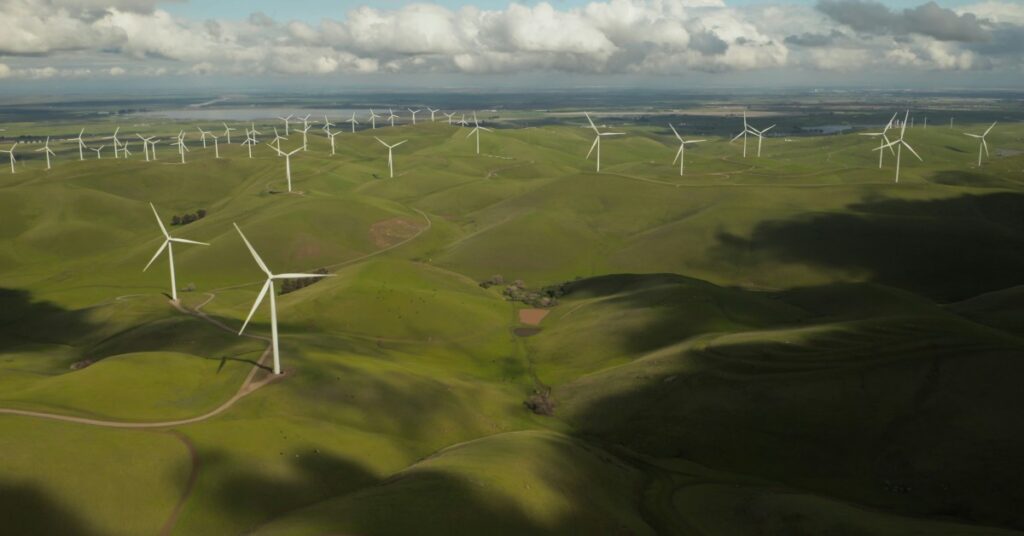Europe is a vast continent with different countries and ways to handle problems. The electricity grid is an essential part of our daily lives and to society as a whole. But what exactly is the electricity grid, and how do countries across Europe manage the flow and stability of this vital resource?
The grid and frequency regulation
The electricity grid is a vast network of power plants, transformers and transmission lines that deliver electricity from different types of producers to consumers. An electric highway system that ensures that power generated in one place like from a wind turbine can reach homes, businesses and industries far away. One essential part of this system is frequency regulation, which ensures that the electricity supply remains stable.
Electricity in Europe typically operates at a frequency of 50 Hz. Frequency regulation is the process of maintaining this certain frequency within a very narrow range of only usually 0,1 Hz by matching electricity demand to production at all times, which is done by the country’s transmission system operator (TSO). If the frequency drops too low or rises too high, it can cause damage to electrical equipment or even blackouts. Different countries have unique approaches and regulations to keep their grids stable. Countries usually share this responsibility within a synchronous grid where collaboration is key.
Nordic Countries
The Nordic synchronous grid includes Finland, Sweden, Norway and the eastern parts of Denmark. A small synchronous grid requires a high level of cooperation and coordination between the countries to ensure stable supply of electricity. Norway, with its large hydropower production, can quickly adjust its power output, making it easier to balance the grid. Sweden, while using hydropower, also relies on nuclear energy which is harder to quickly adjust to demand. The grid in these countries is owned by state-controlled entities such as Statnett in Norway and Svenska Kraftnät in Sweden. These are tasked to ensure a stable frequency and are each obligated to buy a certain amount of capacity for frequency regulation determined by the size of the country’s own electricity system.
The rest of Europe
The UK’s electricity grid is unique because it operates as an island grid separated from mainland Europe’s synchronous grid. This means it has to be self-sufficient in managing frequency stability. The National Grid Electricity System Operator (NGESO) is responsible for balancing supply and demand. The UK uses a mix of energy sources, including natural gas, nuclear, and increasing amounts of renewable energy like wind power. One of the major challenges is integrating these diverse sources while maintaining a stable frequency.
Germany is a powerhouse when it comes to most things which includes renewable energy, particularly wind and solar, making up an ever more notable share of the country’s electricity mix. However, these renewable sources can be unpredictable in its production, making frequency regulation challenging. Germany’s grid, like many countries in Europe, is part of the larger Continental European synchronous grid. The country’s grid is practically owned by four transmission system operators (TSOs): 50Hertz, TenneT, Amprion, TransnetBW and TenneT. These TSOs of course need to coordinate closely to ensure stability and minimize the risk for miscommunication as they are tasked with maintaining the grid’s frequency.
Italy’s electricity grid is also part of the Continental European synchronous grid and faces the unique challenge of balancing power between its industrialized north and less developed south. The country relies heavily on natural gas, hydropower and increasing amounts of solar energy. Terna, the Italian TSO, manages the grid and works to ensure a stable frequency.
Spain, with its abundant sunshine, has significant potential for solar power which the country has taken full advantage of. The country is formally part of the Continental European synchronous grid, shared with many of its European allies. Red Eléctrica de España (REE) is the TSO responsible for maintaining grid stability. Spain’s challenge lies in integrating large amounts of solar energy while keeping the frequency within the desired range due to solar’s unpredictability and being unsynchronized with general electricity usage. Cooperation with Portugal helps balance the grid, especially during peak solar production times.
Ownership and coordination
The ownership structures of electricity grids across Europe vary widely and significantly impact management and development. State-owned grids, such as those in the Nordic countries, can align closely with national energy policies and ensure long-term investments. Privatized grids, like in the UK and parts of Germany, can lead to increased innovation and efficiency, but it requires strong regulation to maintain stability and encourage investment. Hybrid models, seen in Italy and Spain with a more privatized TSO of whom the government owns a large share, aim to balance public interest with market efficiencies.
Innovation
Europe has many different electricity mixes, with a general goal of integrating more renewable energy into their energy system. This is fantastic for our continent as we’re investing in the future, however, it also has its challenges of an increased reliance on more unpredictable and unreliable sources of energy, perhaps leading to less stable frequency regulation. Creative new innovations are needed in order to tackle these problems of the future, but also to eliminate the current ones too. A more effective energy system in general is beneficial to our societies as well as the people that reside within them. Energy storage solutions are therefore going to play a major role in the future of energy to fully utilize the potential of renewable energies. For example, Peak Energy’s ventures into Vehicle-to-Grid and smarter ‘smart charging’ can be a part of the solution.
